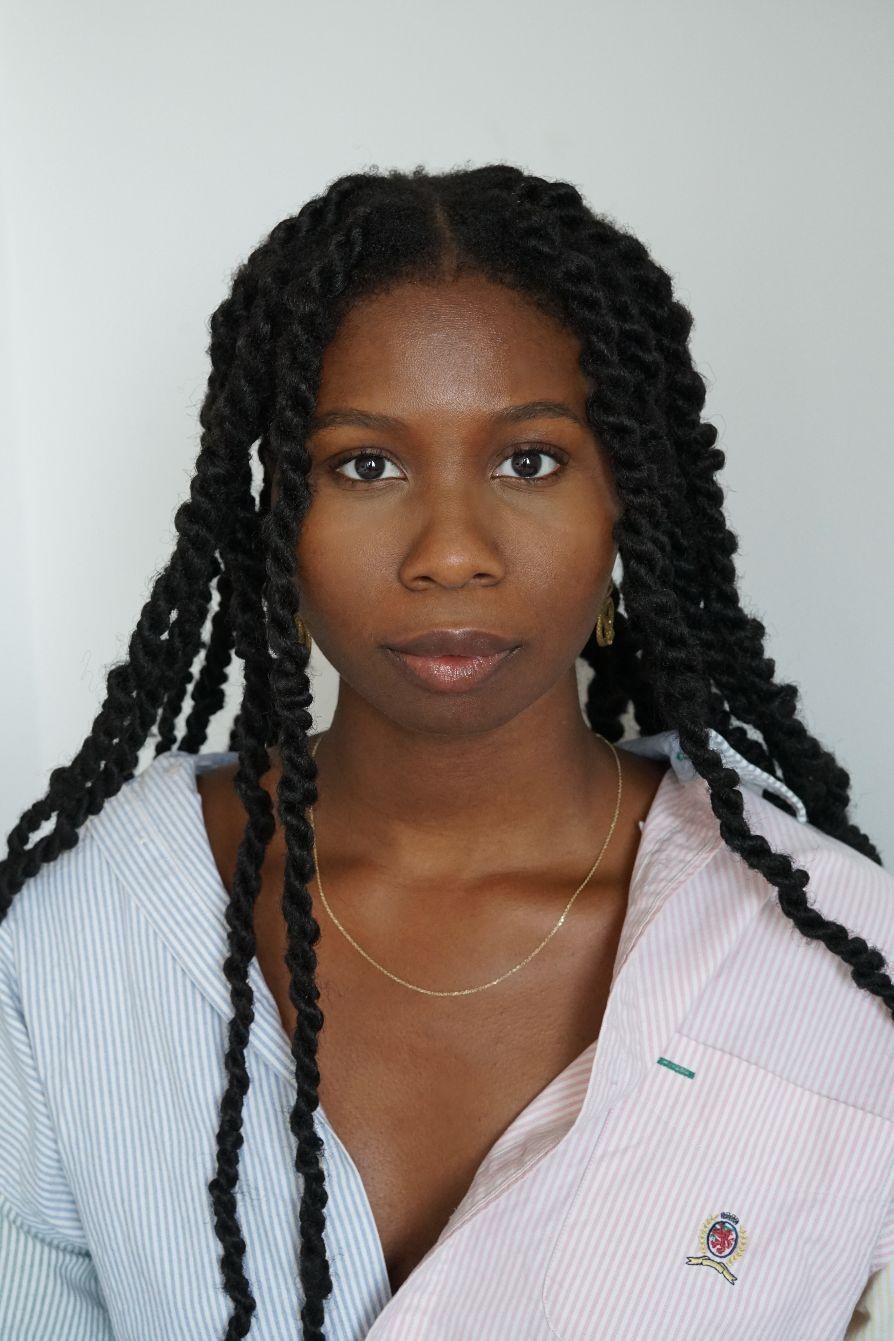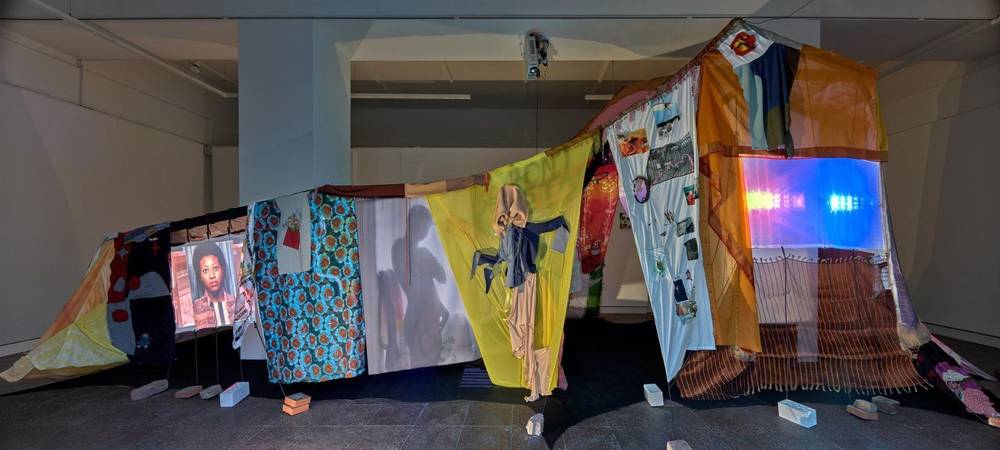Artist Monilola Olayem Ilupeju questions violent norms and seeks ways to heal through embodied practices. We spoke with her about body images, emancipation from white history, and the importance of Black History Month.
Monilola Olayemi Ilupeju is a Nigerian-American artist and writer living in Berlin. Her transdisciplinary practice confronts the distortions of systemic structures while offering avenues toward emancipation and repair. As she works through personal subject matter, she also interrogates the broader, political contexts in which these issues and observations lie.
Monilola, tell us about your work and how you got to become an artist.
My art practice began in high school. I had recently faced a series of family hardships and was barely keeping my head afloat. One day, I bought some cheap acrylic paint, brushes, canvas boards, and colored pencils, kickstarting an obsessive relationship with painting and drawing. In school, my art teacher was skilled and effective, but also very strict and conservative. She put the tradition of European painting on a pedestal, which temporarily narrowed my idea of what art could be.
When I went to New York University for college in 2014, everything changed; I had entered an artistic renaissance. I was suddenly introduced to political art, conceptual art, performance, installation, and video art. I began to understand that there were so many other materials that I had at my disposal, that were not limited to the tangible realm of paint and brushes. Taking up a particular interest in writing, I began to use text as the foundation from which artworks could sprout. Years later, this mode of working is still an integral part of my process. Pursuing my career in Germany has not been without its difficulties, especially as a queer, Nigerian-American woman, but I am grateful and excited for what I have accomplished, the support systems I have built, and the opportunities that loom on the horizon.

What projects are you currently working on?
One project that I’ve recently completed in celebration of Black History Month is a series of sketchbook drawings I made during a day trip to Harlem about the neighborhood and seminal figures that lived there or passed through. The drawings are a part of a larger project, titled A Day in Ha(a)rlem, made in collaboration with Ahmet Öğüt.
The main aim of the project was to shine a light on the violent and largely overlooked colonial past of the Netherlands, pointing out that Harlem in New York City was named after Haarlem, a Dutch colony founded in 1658. Thus, the two Ha(a)rlems have a shared past, yet their legacies are completely different. Despite mass efforts to destroy Harlem and other places with dense Black populations, through food deserts, gentrification, police brutality, and mass incarceration, the neighborhood’s communal spirit lives on. This faculty of resilience, resonance, and creativity is so essential to the survival of the Black community, and I am grateful and emboldened to be a part of that lineage.
Your work discusses aspects of systemic injustice and thereby centers Black experiences. What is it that you want to communicate to your audience?
The main thing that I would like to communicate with my audience is that various systems of control (white supremacy, heteronormativity, misogyny, and ableism, just to name a few) have perverted and distorted reality to such an intense degree that we no longer question what is fact and what is fiction. We accept idealized defaults without investigating how they were initially constructed or without any motivation to change them. Within socio-political contexts, these distortions are typically used towards an agenda, to create arbitrary value hierarchies that are beneficial to certain groups and detrimental to others. For me, true empowerment comes from becoming aware of these distortions, deconstructing them, and carving out new, healing forms of perception.

Another important aspect to your art is emancipation and reparation. How does (your) art help to work towards this?
My art practice has given me the space to process various mental obstacles, for instance my body dysmorphia, which is an anxiety disorder linked to perceived physical flaws. The nude pictures I had taken of my body, initially an act of self surveillance and self loathing, eventually became the reference pictures for large scale oil paintings, allowing me to meditate on these images of my body from a shift in perspective and with heightened presence. Particularly this state of presence helped me to understand that so much of how we see ourselves is shaped by the warpings of oppressive, control systems. When we are not present in ourselves and with one another, we allow these distortions to dull, and in some cases completely alter our senses. And so, reclaiming embodied practices as a way to connect to our intuition, one another, and the tactitlity of the present moment is vital not only in destabalizing these oppressive structures, but also in healing the trauma that prejudice and violence has inflicted upon our lives and bodies.

In February we celebrate Black History Month. Looking at Black History and understanding the impact of Black Struggle onto our daily life is also deeply connected to emancipation from white historiography. What does Black History Month mean to you?
I am consistently moved by the contributions of Black visionaries, creatives, activists, and communities on a daily basis, so Black History Month is just another opportunity to meditate on all of the brilliant work and efforts that have preceded me and shaped the artful life I have the privilege of living, in part due to the labor of many before me. As I express gratitude, it’s also a time for me to think about how I can further support my community by showing up authentically in my art practice and political endeavors.
For far too long, the contributions of Black people have been minimized or completely erased in an effort to maintain the fallacy of white hegemony. As we continue to excavate these lost or obscured wisdoms and build networks for support, Black History Month reminds us of the importance of centering histories that show us that change is possible and that hope is not lost. It allows us to reflect on how far we have come, but also how much there is still left to go.
BLACK HISTORY MONTH
February is #BLACKHISTORYMONTH: We are taking this as an opportunity to examine current debates and positions on SCHIRN MAG and to focus on Black actors in the art and culture scene.









